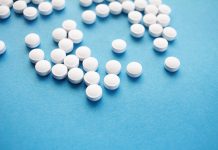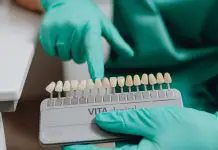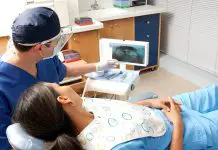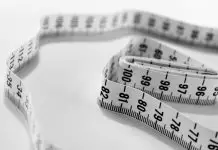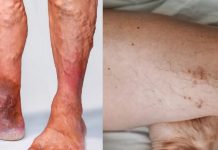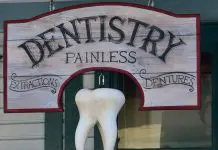Overview, Causes, & Risk Factors
Heart disease is a general term for a wide variety of diseases and conditions that affect the function of the heart.
What is going on in the body?
The main job of the heart is to pump blood to the rest of the body. The primaryconcern with most heart conditions is how much they affect the heart’s abilityto pump blood. When people use the term heart disease, they are often referringto atherosclerosis, or cloggedarteries. Clogged heart arteries cause coronary artery disease, or CAD. In turn, coronary artery disease can lead to:
- chest pain in the form of stableangina or unstable angina
- congestive heart failure, inwhich the heart fails to pump enough blood to supply body tissues
- heart attacks
- irregular heartbeats, or arrhythmias
But heart disease can also refer to many other conditions. This is important forpeople to remember when they see or hear the term heart disease. Heart diseaseis the leading cause of death in the United States and in many other countries.
What are the causes and risks of the disease?
There are many causes of heart disease.
Atherosclerosis, or clogging of thearteries, is partly or fully responsible for many diseases that affect theheart, including:
- congestive heart failure, acondition in which a weakened heart is unable to pump enough blood throughout the body
- heart attacks, also calledmyocardial infarctions
- irregular heartbeats, or arrhythmias, such as ventricular tachycardia
- stable angina or unstable angina, conditions in which chest pain occurs when the heart doesn’t receive enough oxygen
Factors that increase a person’s risk of developing atherosclerosis include:
- diabetes
- excess weight and obesity
- family history of atherosclerosis or coronary artery disease
- high blood pressure
- high cholesterol levels
- increasing age
- lack of exercise
- male gender
- smoking
High blood pressure can cause heartdisease even when arteries are not clogged. The increased blood pressurecan cause heart enlargement, called hypertrophy, and congestive heart failure. It also increases the risk ofclogged arteries, which can further damage the heart.
Congenital heart disease, which means heart disease that ispresent at birth, can result in a heart that has an abnormal structure orfunction. For example, a baby with Downsyndrome may have an atrial septaldefect and/or ventricular septaldefect. Heart valve conditions, such as pulmonary stenosis, may be present at birth as well.
Other causes of heart disease include:
- autoimmune disorders, in which the body is attacked by its own immune system
- heart valve infections, known as endocarditis, which candamage the valves and cause conditions such as aortic regurgitation or mitral stenosis
- infections of the heart muscle, known as myocarditis
- infection of the lining around the heart, a condition called bacterial pericarditis
- kidney failure, which can cause pericarditis, an inflammation of the lining around the heart. Kidney failure may also cause an abnormalcollection of fluid around the heart, called pericardial effusion.
- toxins, such as alcohol and some chemotherapy medicinesused to treat cancer. Both of these can cause a condition called cardiomyopathy,a disease of the heart muscle.
Many other conditions can also affect the heart.
Symptoms & Signs
What are the signs and symptoms of the disease?
Symptoms depend on the cause, severity, and type of heart disease. Common signs and symptoms in heart disease include:
- chest pain or abdominal distress
- cough
- cyanosis, or a bluish discoloration of the skin
- enlarged veins in the neck
- fainting or passing out
- loss of appetite and weight loss
- palpitations, or an unusualawareness of the heartbeat
- shortness of breath
- swelling in the legs
- weakness and fatigue
Other signs and symptoms are also possible.
Diagnosis & Tests
How is the disease diagnosed?
Heart disease is often suspected after a medical history is taken and a physical exam is performed. Furthertests may be done to determine the type, severity, and cause of the heartcondition. These may include:
- blood and urine tests
- cardiac catheterization, aspecial X-ray done with a contrast agent to look at the heart and its bloodsupply
- chest X-ray
- echocardiogram, which usessound waves to view the beating heart
- electrocardiogram, or EKG, which shows the electrical activity of the heart
- stress EKG tests, in which the person either walks on a treadmillor receives a medicine while the effects on the heart are examined with an EKG or imaging test
Prevention & Expectations
What can be done to prevent the disease?
Prevention of heart disease is related to its cause. Heart disease caused by atherosclerosis can be prevented by not smoking and by controlling high blood pressure, diabetes, and cholesterol. Avoidance of alcohol could prevent cases due to this cause. Maintaining a healthy body weight, including physical activity in everyday life, and eating a diet designed to minimize heart diseasecan help decrease heart disease risk.
The American Heart Association recently issued recommendations about hormone replacement therapy (HRT) in women. For women who have already had a heart attack or have heart disease, it appears that HRT does not protect against having another heart attack or dying from heart disease. The studies that support this information were done with women over 65 years of age. It is unclear if this information also holds true for younger postmenopausal women who take HRT.
For women who have not already had a heart attack or who do not have heart disease, HRT should not be started for the sole purpose of preventing heart disease. The research is not strong enough to support doing that at this time. Also, it is not necessary for a woman to stop HRT if she is doing well on it.
Overall, the decision to use HRT should be based upon the proven benefits and risks of HRT. Women should discuss the benefits and risks with their healthcare provider. Together, they can choose the most appropriate course of action.
What are the long-term effects of the disease?
Long-term effects depend on the type, severity, and cause of heart disease.Heart attacks and congestive heart failure are common causesof death in the United States. Heart infections may go away completely after treatment andhave no long-term effects. In other cases, they may cause permanent damage tothe heart or even death.
What are the risks to others?
Heart disease is not contagious. Some inherited causes of heart diseasecan be passed on to one’s children. If the underlying cause is an infection,the infection may be contagious.
Treatment & Monitoring
What are the treatments for the disease?
There are many possible treatments for heart disease. Medicines are commonly used to:
- act as diuretics, or water pills, such as furosemide andhydrochlorothiazide
- control high blood pressure, such as atenolol, hydrochlorothiazide,amlodipine, or enalapril
- control high cholesterol, such as pravastatin, simvastatin, andlovastatin
- help the heart pump better, such as digoxin or dobutamine
- help the heart relax and rebuild itself, such as carvedilol andcaptopril
- prevent blood clots in the heart, such as warfarin
- stop or control irregular heartbeats, such as amiodarone orprocainamide
Surgery or other procedures may also be used to treat heart disease. Theseprocedures include:
- angioplasty, in which aspecial tool is used to open up clogged arteries during cardiaccatheterization
- heart bypass surgery. This is aform of open heart surgery thatuses blood vessels from another part of the body to go around, or bypass,blockages in the heart arteries.
- heart valve replacement, a formof open heart surgery to replacedamaged heart valves
- heart transplantation
- open heart surgery to repairbirth defects in the heart
Many other medicines and surgery techniques are used to treat heart disease.Cardiac rehabilitation and other forms of exercise can also help to improve the person’s ability to function.
What are the side effects of the treatments?
All medicines and surgeries have possible side effects. Medicines may causeallergic reactions or stomachupset. Surgery carries a risk of bleeding, infection, and allergic reaction to anesthesia.
What happens after treatment for the disease?
Most individuals with coronary artery disease are encouraged to begin a regular exercise program. A person with CAD should make every effort to reduce coronary risk factors. This may includesmoking cessation, control of otherdiseases such as diabetes and high blood pressure, and eating a healthydiet for prevention of heart disease.
Many people with heart disease need lifelong treatment and monitoring. Deathmay occur, even with the best treatment.
How is the disease monitored?
A person with heart disease will have regular visits to the healthcareprovider, along with periodic EKGs and blood tests. Any new or worseningsymptoms should be reported to the healthcare provider.
Article type: xmedgeneral





